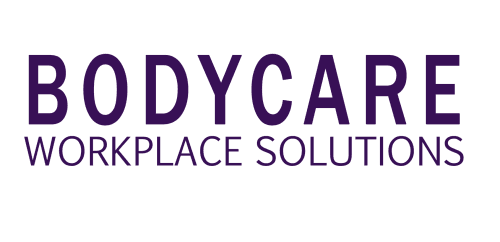Everything You Need to Know About Silica Health Monitoring

We are excited to share that we are expanding our service offering into silica health monitoring. Over the last few years we have seen more and more workers develop silica related disease as a result of workplace exposure, leading to tighter restrictions around protecting at risk employees.
Silica (silicon dioxide) is a naturally occurring mineral that forms the major component of most rocks and soils. It is highly abundant in the environment, making it one of the most common naturally occurring elements on the planet. It is therefore also commonly present at work sites as it’s used in many products across a variety of key industries and workplaces, including in processing of engineered stone, mining and other construction labour activities.
Materials that contain crystalline silica are not hazardous unless they are disturbed via mechanical processes such as crushing, cutting, drilling, grinding, sawing or polishing, which can occur in the workplace. These processes tend to generate respirable silica dust particles that can cause irreversible lung damage. The symptoms of related health diseases such as silicosis – which workers can develop from breathing in silica dust – may not appear for many years after exposure, making occupational health monitoring critical.
What’s more, it’s estimated that over half a million Australians are currently exposed to silica dust in the workplace with over 10,000 predicted to develop lung cancer in their lifetime and over 100,000 predicted to develop silicosis.
As an employer, you have a duty to protect your workers from exposure to silica dust. Keep reading to find out everything you need to know about workplace silica health monitoring.
What is Crystalline Silica?
Silica comes in non-crystalline and crystalline forms. While non-crystalline forms of silica are not harmful to the respiratory system, crystalline forms have the potential to create silica dust particles through the treatment and processing of the silica-containing materials. These particles are small enough to penetrate deep into the lungs, being termed ‘respirable’. Respirable Crystalline Silica (RCS) is known to cause lung damage and disease.
High risk industries and work activities
Industries or work activities that can be considered ‘high risk’ are those that are performed in connection with a crystalline silica process that is likely to result in significant airborne concentration of respirable silica dust, posing a risk to the health of employees.
Examples of work activities involving respirable silica that pose particular risk include:
- Fabrication, installation, maintenance, and removal of composite stone countertops.
- Excavation, earth moving and drilling plant operations.
- Clay and stone processing machine operations.
- Paving and surfacing.
- Mining, quarrying and mineral ore treating processes.
What are the potential health effects following exposure to crystalline silica?
Breathing in silica dust can cause a range of serious diseases, both when inhaled into the lungs over a long period of time at low to moderate levels, or short periods at high levels of exposure. For this reason, it only takes a very small amount of the very fine respirable silica dust to create a health hazard.
Exposure to crystalline silica can have several potential health effects for an individual, with varying degrees of severity as listed below:
The leader among the screened respiratory diseases is silicosis, an occupational lung disease caused by the inhalation of respirable crystalline silica which causes scarring of the lungs. Silicosis is a progressive disease which can remain asymptomatic for decades. There is no effective treatment even after cessation of exposure.
Aside from silicosis, inhaling crystalline silica can lead to other serious, sometimes fatal illnesses including lung cancer, tuberculosis (in those with silicosis), and chronic obstructive pulmonary disease (COPD).
Protecting your team against silica
In order to protect your team, it’s important to conduct regular risk assessments and implement the most effective controls to minimise the hazards of inhaling crystalline silica. You can read more about the appropriate controls to implement in your workplace here.
Equally important is the need to provide regular health monitoring on all employees to assess the ongoing health of your team.
Given the dangers involved with exposure to respirable crystalline silica, it’s imperative to choose a health screening provider that works to the highest standards and follows the relevant state legislative requirements.
When should workplace health monitoring be conducted for crystalline silica?
Symptoms of silicosis and progressive massive fibrosis may not appear for many years after exposure. This means that workers may be diagnosed with these diseases and not present with any symptoms, even at the point of initial diagnosis, which is why health monitoring at the stages outlined below is so critical.
- Silica health monitoring in pre employment assessments
Health testing for exposure to crystalline silica can be conducted before an employee is onboarded so that a baseline can be established and any changes to the worker’s health after commencing the work can be detected. - Ongoing silica health monitoring
From the initial health monitoring date, a worker’s health should then be monitored annually. Where workers are exposed, suspected of being exposed or are concerned about exposure to crystalline silica, the person conducting the business or undertaking (PCBU) has a duty to arrange a health monitoring appointment for the worker(s) with a registered medical practitioner annually. - Employee exit silica health medicals
At the end of a worker’s time working with engineered stone, for example, before retirement or before the worker’s duties change permanently, a final medical examination should be carried out by a registered medical practitioner. This is done to protect the worker as well as your business, ensuring their health status hasn’t deteriorated and they are exiting your business clear of any exposure.
What does silica health monitoring involve?
Health monitoring required for respirable crystalline silica (RCS) involves a registered medical practitioner with experience in health monitoring examining and monitoring the health of workers to see if exposure to hazardous chemicals at work is affecting worker’s health.
The minimum health monitoring requirements for RCS include:
- Collection of demographic, medical and occupational history.
- Records of personal exposure.
- Physical examination.
- Standardised respiratory questionnaire.
- Standardised respiratory function tests, for example, FEV1, FVC and FEV1/FVC, and;
- Chest X-Ray full PA view (baseline and high-risk workers only).
Legislative requirements
Under the Workplace Health and Safety (WHS) Regulations, a person conducting a business or undertaking (PCBU) has a duty to provide health monitoring to workers where they conduct ongoing work at a workplace generating silica dust and there is a significant risk to their health because of the exposure to the harmful dust.
When providing health monitoring, a PCBU must:
- Give information to workers prior to the commencement of work and to prospective workers about health monitoring requirements, ensuring that this information is understandable by the worker (for example, consider literacy needs and cultural or linguistically diverse backgrounds).
- Ensure health monitoring is carried out by or under the supervision of a registered medical practitioner with experience in silica health monitoring
- Consult workers about the selection of the registered medical practitioner.
- Pay all expenses relating to health monitoring including time to attend appointments, tests and appointment fees.
- Provide information about a worker to the registered medical practitioner as specified in the WHS Regulations.
- Take all reasonable steps to obtain a report from the registered medical practitioner as soon as practicable after health monitoring has been carried out.
- Provide a copy of the report to the worker and to all other PCBUs who have a duty to provide health monitoring for that worker, for example, where labour hire is used.
- Provide the WHS regulator with a copy of the report if it contains adverse test results or recommendations that remedial measures should be taken.
- Keep reports as confidential records for at least 30 years after the record is made, and
- Not disclose the report to anyone without the worker’s written consent unless required or permitted by law, for example, WHS laws.
We know it can be tough to get your head around what’s required when it comes to working with respirable silica dust and meeting all statutory requirements to ensure full protection of your workers and business. At Bodycare, we ensure best practice across all of our health surveillance testing which includes working to the highest standard when monitoring for crystalline silica. Get in touch today to learn more.


